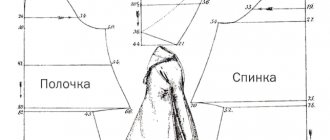Household and industrial heaters operating on the principle of inductive heating appeared relatively recently, but quickly became serious competitors to older modifications with traditional heating elements. With similar heating output, they consume less energy and are able to heat up the heating circuit faster; in addition, they can be used together with low-quality coolant. Using electrical installation skills, you can make an induction heating boiler with your own hands, and drawings, diagrams and installation descriptions will help you assemble the heater from available consumables.
Installation of an induction heating boiler
The “inductor” consists of a core, a toroidal winding, a high-frequency generator and auxiliary elements. The first one acts as a heat exchanger: when heated, it gives off heat to water or other liquid flowing through the heater. The power wire is located around the core in such a way that eddy currents arising in the metal cause it to heat up. The element is made from a large-section copper conductor.
The winding is connected to a high-frequency pulse generator, through which a current of a given frequency is obtained. The process is controlled by an electronic unit that monitors the degree of heating and can, in the event of an emergency, shut down the device. The heater is covered with heat-insulating material and an external decorative shell. The housing protects the operator from burns and electrical injuries due to possible damage to the insulation.
Advantages and disadvantages
Analyzing the work process of the heater and the costs associated with it, I would like to note the undoubted advantages that the owner of such a device receives:
- Efficiency 99%, virtually no heat loss.
- During operation of the system, scale does not form, unlike heaters with heating elements.
- Environmentally friendly room heating.
- When heating, you can use both water (most often) and antifreeze or oil.
- There is no need for frequent preventive maintenance.
- The installation process does not require special skills, unpretentious operation.
- High fire and electrical safety.
- Possibility of combination with other heating systems.
- Works on both AC and DC mains.
- Service life over 20 years.
Despite all the advantages that the device has, one cannot fail to note the significant disadvantages:
- high cost of equipment in stores;
- expensive heating;
- requires a stable power supply;
- heavy weight of the device;
- Possibility of installation only in a closed heating system.
Types of boilers
Manufacturers produce 2 types of induction heating units. The first received the SAV marking. The inductor of these devices represents the primary winding. It accepts current with a frequency of 50 Hz. A system of short-circuited pipes filled with coolant represents a secondary winding combined with a heat exchanger. The latter heats up when exposed to eddy currents. Due to limited frequencies, heaters of this type are not made more powerful than 50 kW. They are connected to a single- and three-phase network.
The second type of electric boilers is VIN. Their heat exchanger is made of a ferromagnetic alloy, which is capable of excellent magnetization reversal, causing strong heating. In addition, the current entering the winding is high frequency. This achieves greater efficiency and economy of the heater. Boilers of this type are manufactured with a power of up to 500 kW.
Important!
When installing an “induction”, take into account that it can interfere with the operation of various household appliances. As a rule, the electric boiler is installed several meters away from them.
Scheme
It is quite possible for a craftsman who knows how to read electrical diagrams to make a heating furnace or induction melting furnace with his own hands. Each master must determine the feasibility of installing a homemade unit for himself. It is also necessary to have a good understanding of the potential danger from poorly executed such structures.
To create a working furnace without a ready-made circuit, you need to have an understanding of the basic physics of induction heating. Without certain knowledge, it is not possible to design and install such an electrical device. Device design consists of development, design, and diagramming.
For those smart owners who need a safe induction furnace, the circuit is especially important, as it combines all the best practices of a home craftsman. Such popular devices as induction furnaces have a variety of assembly schemes, where craftsmen have the opportunity to choose:
- furnace containers;
- operating frequency;
- lining method.
How does an induction boiler work?
The operating principle of the heater and other electric heaters is based on the ability of conductive materials to increase their temperature under the influence of eddy currents resulting from electromagnetic induction. The latter creates a high-frequency alternating voltage passing through the primary turns of the device, assembled into a coil.
The function of the secondary receiver is performed by a heating element placed inside the heat exchanger. In it, under the influence of a strong magnetic field, the thermal energy of the chaotic movement of atoms is released. The installation can also operate at industrial frequency, used in a regular power supply network. But the heating efficiency will be low, and the process itself will be accompanied by increased noise and vibration. The optimal frequency is considered to be above the threshold of 10 kHz. In this mode of operation, the hum disappears, vibration becomes imperceptible and efficiency increases.
Safe use
Please note that an induction heater is an electrical device of increased danger. Rules that should be taken into account when manufacturing such equipment:
- Equip your device with a temperature sensor. If the equipment overheats, the system must have the ability to automatically shut down.
- For homemade equipment, organize a separate electrical wiring line with a larger wire cross-section.
- Do not neglect the insulation of exposed areas, protect your loved ones from electric shock.
- Before turning on the inductor, make sure that the pipe is filled with water. In its absence, the device may burn out and the pipe may melt.
- Do not place the equipment in a residential area. Electromagnetic waves have a negative impact on the health of people and animals.
- The device should be installed at a height of more than 80 cm from the floor, and the distance from the device to the ceiling should be at least 30 cm.
- Ground the equipment.
- The device should be installed via an automatic device, so that in the event of an accident, the device will be disconnected from the power supply.
- To reduce the pressure in the system, it is a good idea to install a safety valve in the pipeline system.
If we summarize the information, we can conclude:
- The induction heater has a high efficiency, for some models it reaches 99%.
- The device can be used both as a water heater and as a boiler in a heating system.
- The design of the heater is quite simple, so its assembly and installation is possible on your own.
- The use of an induction water heater in the Russian Federation is not regulated.
Despite all the advantages, the decision to install such equipment should be made carefully:
- Firstly, it consumes a fairly large amount of electricity.
- Secondly, the device, especially one assembled independently, cannot be called completely safe.
- Thirdly, it has a negative impact on the health of people and animals. Therefore, it should still be installed at dachas or in your own homes.
From this article you will learn how to assemble an induction boiler with your own hands. We will tell you about the operating principle of this device and give possible options for saving on heating. You will also find videos with detailed instructions on how to create an autonomous heating system for an apartment or house.
What a vortex induction water heater is has been known for a long time. RMNT.RU has already provided comprehensive information on induction boilers.
Factory-made products always attract buyers with their neat appearance and ease of execution. However, these benefits have to be paid generously out of your own pocket. Home craftsmen react instantly, copying store-bought products in garages and at home. As a result, they achieve the same performance indicators, but are several times cheaper.
How to make an induction heating boiler with your own hands for heating your home
“Induction units” of various performance levels are freely available on the climate control equipment market, but their cost is significantly inflated. This forces craftsmen to assemble heaters from available components. In order not to solder complex electronic circuits, they make induction heating boilers with their own hands from inverters, a welding machine or cookers operating on the induction principle.
From induction hob
An ordinary kitchen appliance can be used to create an electric boiler. The master has 2 ways to implement the project. For those who do not want to delve into the intricacies of the process and create complex designs, using the electrical appliance for its intended purpose is suitable. To do this, install a closed heating container with inlet and outlet pipes on it. The latter are connected to the heating circuit, and heating will occur in the same way as boiling water in a pan.
The second method is more difficult to implement. To do this, you will have to completely disassemble the device and remove the necessary elements. The craftsman will need a copper core to make a coil and a control unit to power the power unit. However, this technique has several disadvantages:
- Selection of the induction value of a homemade design. The master will need to experimentally determine the number of turns that corresponds to the optimal one. Only in this case the work will be as effective as possible.
- Control system inadequacy. The tile controller is not designed to work as part of boiler automation. It will turn off the heating over time, even if the coolant has not reached the set temperature.
Important!
The power of most induction cookers does not exceed the threshold of 2.5 kW, which does not allow them to be used in the manufacture of a high-capacity boiler unit.
From inverter
A DC-AC voltage converter can serve as a source of high-frequency signal for assembling an “inductor”. The device is selected or manufactured with appropriate power capable of generating a sufficient amount of heat. The technician will also need a primary coil and a block of capacitors.
The winding is made of copper pipe or wire in ceramic insulation. In the first case, you can run water through the coil for cooling and additional heat extraction. The element is rolled around a cylinder of suitable diameter. Depending on the power of the device, you will need at least 5-6 turns. The edges of the coil are connected to a block of capacitors and a voltage inverter.
Powered by welding machine
The function of a frequency generator can be performed by a modern welding unit. It is capable of generating current with a frequency of 20-50 kHz, which is excellent for creating an “inductor”. Manufacturing sequence:
- Strips of PCB are glued to a piece of plastic pipe with a diameter of 2 inches and a length of 0.6 m, onto which a winding of 50-100 turns of copper wire in enamel insulation is wound. Leave at least 5 mm between individual rings.
- Pieces of stainless wire are poured into the pipe.
- Polypropylene adapters of a size corresponding to the connecting fittings of the heating circuit are soldered at both ends.
- Coat the coil with epoxy to ensure reliable electrical insulation.
- The edges of the winding are connected to the terminals of the welding inverter. They must be made independently by connecting conductors to points where the voltage has not yet been rectified.
- All elements are installed in a cabinet, which is mounted on the wall. Make all necessary connections.
To automate the heating process, you can connect the welding machine via a power relay or contactor controlled by a thermostat. This combination will allow you to turn the unit on and off when the set temperatures are reached.
Simple option
The simplest boiler can be assembled at home if you have the skills to work with a welding machine, as well as an angle grinder. Before making a boiler, you need to prepare a square metal pipe measuring 50x50 mm with a wall thickness of 2 mm. You can see the manufacturing process in the Video section.
The dimensions of the pipe and the shape of the pipe may differ, but the wall thickness should not be small.
- Using a grinder, you need to cut the profile pipe into pieces 50 cm long. You will need 5-6 pieces (everything will depend on the width of the induction cooker used).
- Additionally, you need to prepare two elements 25 or 30 cm long (it all depends on how many sections were selected).
- Parts of 50 cm are welded together. All of them must be positioned vertically. First, you can fix them with tacks, and then thoroughly weld all the joints.
- Two additional blanks need to be cut off on one side to form a U-shaped profile.
- To the finished module of 5 elements, two sections with one wall removed are welded onto the lower and upper parts. Their goal is to combine all the individual sections into a circuit.
- Next, you need to hermetically seal the resulting holes on the sides.
- The inlet and outlet pipes are inserted. They should be located diagonally, one at the bottom, the other at the top. You can use a ¾" pipe. Two threaded outlets are welded to them to make it easier to install into a finished heating system.
- All seams after welding are cleaned using a grinder. The finished structure is degreased and coated with paint.
- The device is mounted in the installed circuit. The return flow of the coolant is supplied from below, and the outgoing pipe is supplied from above.
- The heating element is a conventional induction cooker. It is necessary to purchase a stove with the ability to adjust the current and temperature.
- It is located behind the boiler close to its back wall.
- Water passing through this structure has time to warm up. The system must have an expansion tank, as well as a forced circulation pump.
The same option can be made horizontally. To do this, we need a 20x25 cm profile pipe. Its two ends are welded using metal plugs to form a closed vessel. Two holes are cut in the upper wall, an air release valve is installed in one, and a pipe through which water will flow into the system is installed in the other. The return pipe cuts into the side.
Important assembly guidelines
When assembling the “inductor”, you should take into account that it is advisable to place it vertically. This arrangement will ensure more uniform heating and coolant circulation. It is worth taking into account that a homemade unit will be larger in size and heavier than a heating element. This imposes certain restrictions on the choice of installation location.
In a homemade boiler, it is necessary to provide elements of protection against excess pressure and airing. The first can lead to rupture of pipelines, and the second can lead to overheating of the structure and fire. The pressure is controlled by relief valves or electric contact pressure gauges, and the presence of coolant inside the unit is monitored by special sensors.
If the master has the necessary knowledge in the field of electronics, then, after working out several designs, you can get a good boiler unit. However, most craftsmen choose simpler ways to solve the problem. In addition, a video of the process recorded by experienced electronics engineers can help in assembling an induction heating boiler with your own hands in a private house.
When is it better to make your own?
Making a boiler with your own hands is advisable for houses with seasonal residence. As a rule, low-power equipment is installed in such buildings, and there is no need to spend huge amounts of money on purchasing a ready-made model. The costs of making the device yourself are minimal.
Even for a home-made unit, it is easy to select additional automation units that allow you to set the required temperature parameters. Such a device will not only allow you to set the desired parameters for a long period of time, but will also provide remote control of the entire heating system.
Report a typo
I've heard about such things, but I've never personally used them. This completes the renovation.
Disadvantages include the fact that users need to use certain cookware that is made from ferromagnetic materials. The body is made in black.
A heat gun is good because it quickly distributes heat. If there is grease on the surface, the system may simply not recognize human touch.
It has four burners and touch controls. It is important to remember that induction cookers are capable of creating fairly high electromagnetic radiation and can have a negative effect on household appliances installed at a short distance.
Using a multimeter you need to check the fuse box, cable and the contacts themselves.
What is the outcome of the study?
Getting it is not a problem, but where can I get the firmware? What's inside











